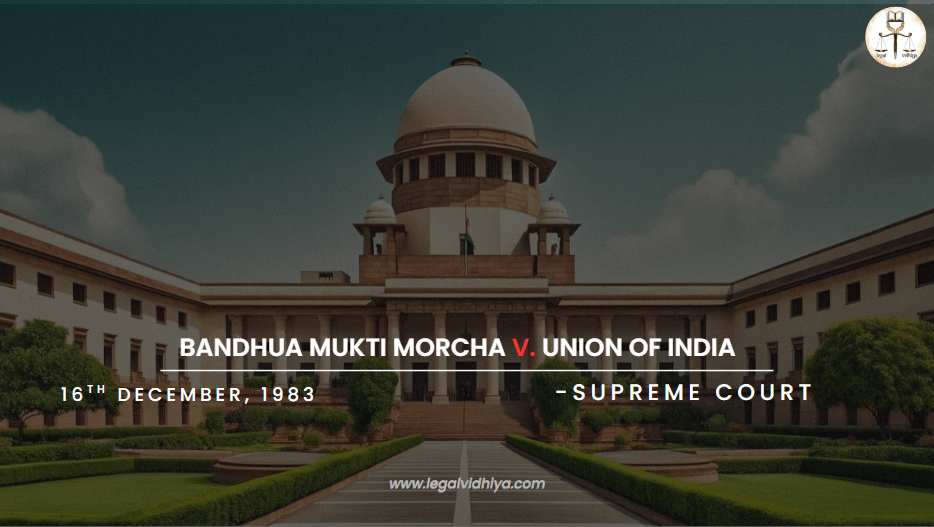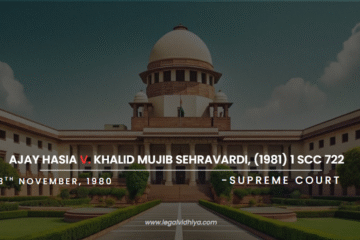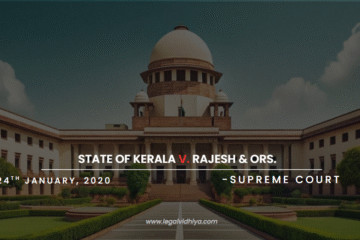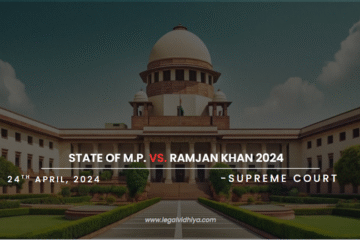
| CITATION | AIR 1984 SC 802; 1984 SCR (2) 67 |
| DATE | 16 December, 1983 |
| COURT NAME | Supreme Court of India |
| PETITIONER | Bandhua Mukti Morcha |
| RESPONDENT | Union of India & Others |
| JUDGES | Justice P.N. Bhagwati Justice A.P. Sen Justice R. Reddy |
INTRODUCTION
This important case represents a watershed moment in Indian jurisprudence involving bonded labour and the scope of public interest litigation (PIL). It significantly broadened the ambit of Article 21 of the Indian Constitution by identifying the right to live with dignity as a basic right and holding the State accountable for enforcing such rights, even when third parties infringe them. It promoted judicial activism by permitting non-affected persons to petition the Court for the upholding of rights on behalf of the disadvantaged.
FACTS OF THE CASE
- Bandhua Mukti Morcha, an NGO devoted to the abolition of bonded labor, sent a letter to Justice P.N. Bhagwati that was considered as a writ petition within Article 32 of the Constitution. The letter emphasized the harsh working conditions of bonded laborers in Faridabad, Haryana, stone quarries. These workers were reportedly held in bondage, denied basic requirements, and subjected to abuse and exploitation in violation of different labor rules.
- The petition questioned the lack of enforcement of the Bonded Labour System (Abolition) Act of 1976 and other welfare regulations designed to safeguard workers’ rights. The Court created a committee to investigate the situation on the ground, and the results verified the petitioner’s allegations.
ISSUES OF THE CASE
1.Whether a letter sent by a third party (Bandhua Mukti Morcha) might be considered a writ petition.
2. What is the scope of the State’s responsibility to enforce basic rights under Article 21?
3.Whether the Court can intervene through PILs and impose orders for the enforcement of socioeconomic rights.
4.Whether the labourers employed in the stone quarries of Faridabad were bonded labourers.
JUDGEMENT
The Supreme Court ruled in favour of the petitioner, holding that the workers in question were indeed bonded labourers under the Bonded Labour System (Abolition) Act of 1976. It found that the State had failed in its constitutional duty to eradicate bonded labour and protect fundamental rights guaranteed under Articles 21 (right to life), 23 (prohibition of forced labour), and 24 (prohibition of child labour). The Court affirmed that a letter from a concerned individual or organization could be treated as a writ petition under Article 32 if it raises serious allegations of human rights violations. It reiterated that the right to life under Article 21 includes the right to live with dignity. The Court emphasized the State’s obligation to proactively identify, release, and rehabilitate bonded labourers. Accordingly, it directed the Union of India and the State of Haryana to implement all relevant labour welfare laws, ensure the provision of medical and sanitation facilities, guarantee the payment of minimum wages, and uphold humane working conditions.
REASONING
The Court recognized that to make constitutional rights meaningful for the underprivileged and marginalized sections of society, legal innovation was essential. Emphasizing Article 21, the Court affirmed that the right to life includes the right to live with dignity, encompassing access to education, housing, healthcare, and a means of livelihood. It highlighted public interest litigation as a powerful tool for delivering justice to the disadvantaged. The Court further held that the State’s failure to act or enforce the law amounts to a violation of fundamental rights. For true social justice to be achieved, the judicial system must be dynamic, flexible, and accessible. The ruling made it clear that procedural technicalities should not obstruct justice, especially in cases involving the poor and illiterate.
CONCLUSION
This case stands as a cornerstone of Indian constitutional law and judicial activism. It institutionalized Public Interest Litigations (PILs) as a vital method for enforcing socio-economic rights and broadened the interpretation of Article 21, recognizing that the right to life encompasses much more than mere animal existence. The judgment significantly strengthened the judiciary’s role in holding the executive accountable for the protection and enforcement of fundamental rights. It also underscored the State’s responsibility in safeguarding these rights and ensuring the proper implementation of welfare legislation. By laying the foundation for numerous future PILs, the ruling established that justice is not a cloistered virtue but a living, dynamic tool for achieving equality and dignity for all.
REFERENCES
- https://indiankanoon.org/doc/493737/
- AIR 1984 SC 802
- Bandhua Mukti Morcha v. Union of India, (1984) 3 SCC 161
Written by ADITI BAFNA Subramanian an Intern under Legal Vidhiya.
Disclaimer: The materials provided herein are intended solely for informational purposes. Accessing or using the site or materials does not establish an attorney-client relationship. The information presented on this site is not to be construed as legal or professional advice, and it should not be relied upon for such purposes or used as a substitute for advice from a licensed attorney in your state. Additionally, the viewpoint presented by the author is personal.
‘Social Media Head’ and ‘Case Analyst’ of Legal Vidhiya.




0 Comments